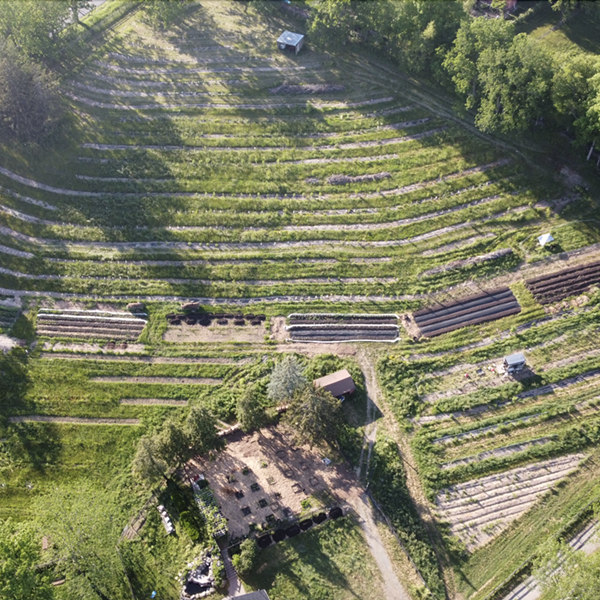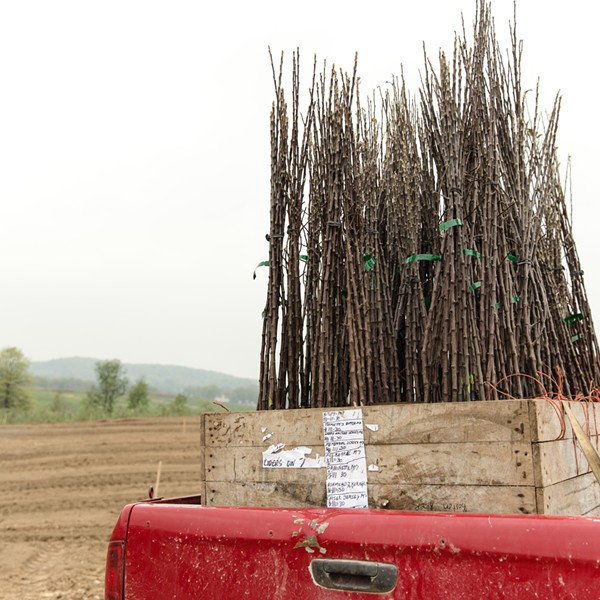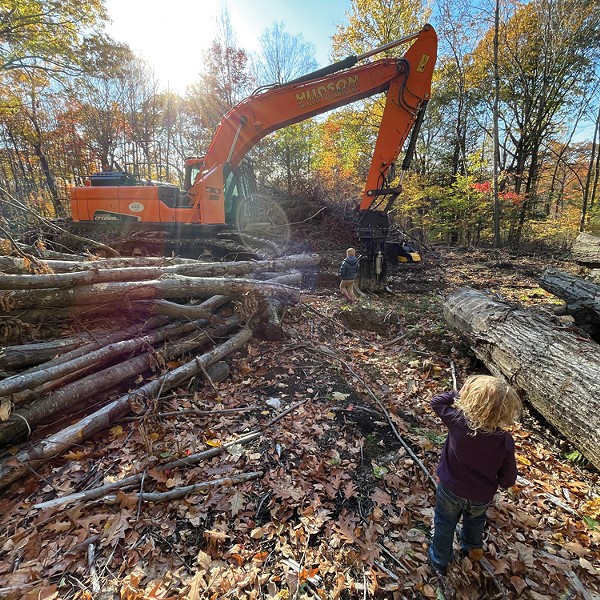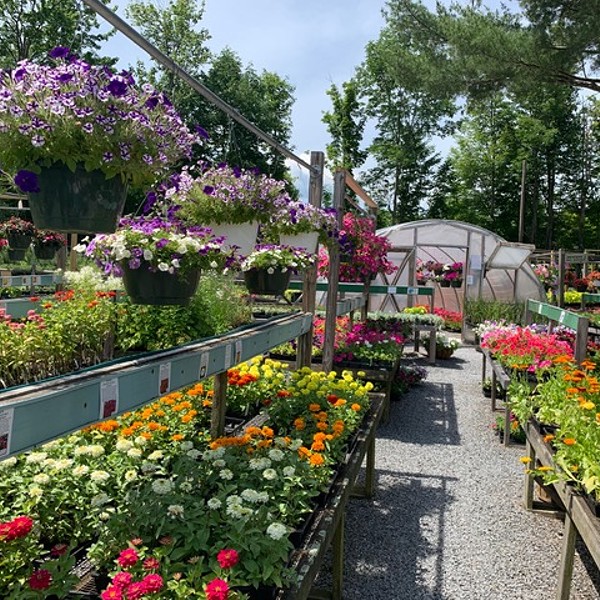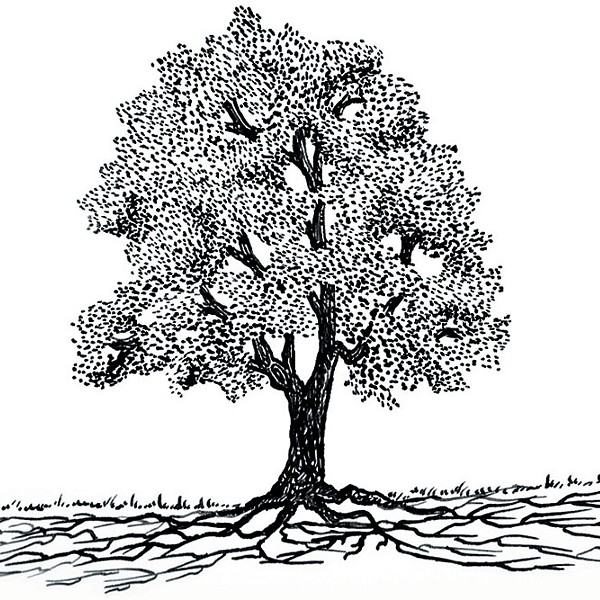
Sometimes site conditions preclude the use of a shade tree, butthere are alternatives, like Vici Danskin’s vine-covered pergola
Beware of home and garden media outlets that say, “Plant trees to save money on your energy bills!” And not much else. Where you plant is so very important. Do some planning lest your new shade trees actually drive your utility bills up.
Light Play
Start by observing patterns of sun and shade at key times during the year; I recommend you do this around the summer and winter solstices. In 2012, the summer solstice falls on June 20, and the winter solstice is December 21. These are the longest- and shortest-length days of the year, respectively. Note the amount of sun coming through windows throughout the day.
Where I live in the Hudson Valley, at noon on the summer solstice, the sun’s angle relative to the earth is about 68 degrees. At noon on the winter solstice, the sun will be at about 24 degrees to earth. This means that the summer sun will cast shorter shadows, while the winter sun will cast longer shadows. This is helpful to bear in mind when thinking about shade tree placement.
In winter, shade on a home from evergreens and deciduous trees both has been shown to drive up heating costs enough to negatively offset the energy saved on air-conditioning in summer. So you want to be careful not to shade your home in winter. (However, if you don’t have any air conditioning, the consensus is that making your home livable in the summertime with maximum shade outweighs the extra heat cost in the winter from that same shade.)
In summer, you want your tree to throw shade across windows during the hot afternoon hours. Because of insulation, shade on walls has less impact than shade on windows. In the summer, trees work to cool is in two ways—directly, by blocking solar radiance/creating shade; and indirectly, as a benefit of evapotranspiration (ET), by which the tree cools the air around it. Shading your AC unit during the hottest part of the day is also a good use of trees.
The Four Directions
East. Some say you should plant trees on the east to reduce summertime heat buildup in the morning. Other studies show that shading east windows in the cool morning hours does not reduce one’s electricity bill at all. I want maximum warming sunlight on winter mornings, so I choose not to have shade trees on the east side of the house, especially since the energy savings in summer is disputed.
South. Planting trees on the south side of the house is not helpful to our energy savings cause. First, when the angle of the sun is this high, to get any real shade on the house you’d have to plant so that trees overhangs it. In winter, the shadows cast by trees will be longer, but this is not in our interest then.
West. Here’s where all the studies and sources most fully align: Trees planted on the west side of the house yield the biggest return in summertime energy savings and personal comfort. According to a study, “The Value of Shade: Estimating the Effect of Urban Trees on Summertime Electricity Use,” by Donovan and Butry, “A tree planted on the west side of a house can reduce net carbon emissions from summertime electricity use by 30 percent over a 100-year period.” But well before that 100-year mark, you’ll receive valuable shade from your tree. Depending on the species you use, how fast growing it is, how well matched it is to site, and what kind of post-planting maintenance it gets, your tree can start giving you appreciable shade in five to 10 years.
A tree on the west side of the house should be planted such that, at projected maturity, its canopy will be just up to the house wall.
North. Skip the trees here. Studies show that trees close to the north side of homes can actually cause electricity bills to go up in summer. According to Donovan and Butry, there are three theories behind this: “Perhaps trees close to a house reduce the cooling effect of wind, slow the release of heat at night, or cause more lighting to be used in the house.” Trees planted further away, on the northwest corner of the property for winter windbreak, are a different matter.
Right Tree, Compost, and Patience
Figuring out the right place to plant your shade tree (think: west) is just the first step in making a successful planting. You’ll need to find a good match between your site and your intended tree. If you have alkaline soil, you need a tree that can tolerate high-pH soil. If the spot tends to be seasonally wet, you need a tree than can cope with that. The Cornell Urban Horticulture Institute’s (UHI) free publication Recommended Urban Trees will help you assess and prepare your site and make a good plant selection (and yes, almost all of us have citylike challenges to present to our trees, even if we don’t live in the city). The publication also has a terrific section on planting.
A word about patience. You want the shade, and you want it now. But the fastest-growing trees are not necessarily the sturdiest. Consider planting an oak tree (matched to your site conditions, of course) for long-lived stateliness, and a faster-growing albeit shorter-lived tree as well. Plant the taller maturing tree farther away and the shorter one closer to the house.
A New Paltz Case Study
Vici Danskin lives adjacent to Historic Huguenot Street in New Paltz and has planted strategically for maximum shade. “Dappled shade is my favorite thing,” she says, “and I don’t like to be out in the sun. Fortunately, I like trees and like being surrounded by them.” When Danskin and her husband bought the property in the 1990s, there were no trees, just grass. “I don’t know how we stood it in July, August, and early September,” she says. “It was awful.”
In 1999, they planted trees on the south side of the house to achieve their top priority, summertime shade. First they planted a pear tree (small maturing) close to the house, then a river birch (medium maturing) a little further away, and finally, a pin oak (large maturing) yet further away. These made the yard more comfortable within just three years and started shading the house appreciably within five years.
It was a little trickier on the west side, however, where the driveway bisects the available planting space. There wasn’t room enough for a tree by the house, yet the property on the other side of the driveway had another limitation—black walnut trees, which exude a chemical, juglone, that is toxic to many other trees. Indeed, Danskin has tried to grow a variety of trees here and observed that, apart from a small cherry tree, they could not grow hearty root systems, despite great sandy loam-soil.
Danskin went with a vine-covered pergola, nine feet tall and running the length of the gabled section of the house. After some misfires (wisteria that was too vigorous, for example), she got the right mix of vines: Arctic Beauty kiwi and sweet autumn clematis. They had to be chosen for the peculiar circumstances of the western exposure: shade for most of the day, then blasting hot sun from about 3 to 7 pm. In the wintertime, the vines lose their leaves and Danskin can enjoy the view. It’s proven a worthy, cooling alterative to tree shade.
Resources
The value of shade: Estimating the effect of urban trees on summertime electricity use
by Donovan and Butry
Donovan.hnri.info/pubs/donovan_and_butry.pdf
Effects of individual trees on the solar radiation climate of small buildings
by Gordon Heisler
Treesearch.fs.fed.us/pubs/34772
Cornell Urban Horticulture Institute: Recommended Urban Trees
Hort.cornell.edu/uhi/outreach/recurbtree/index.html









